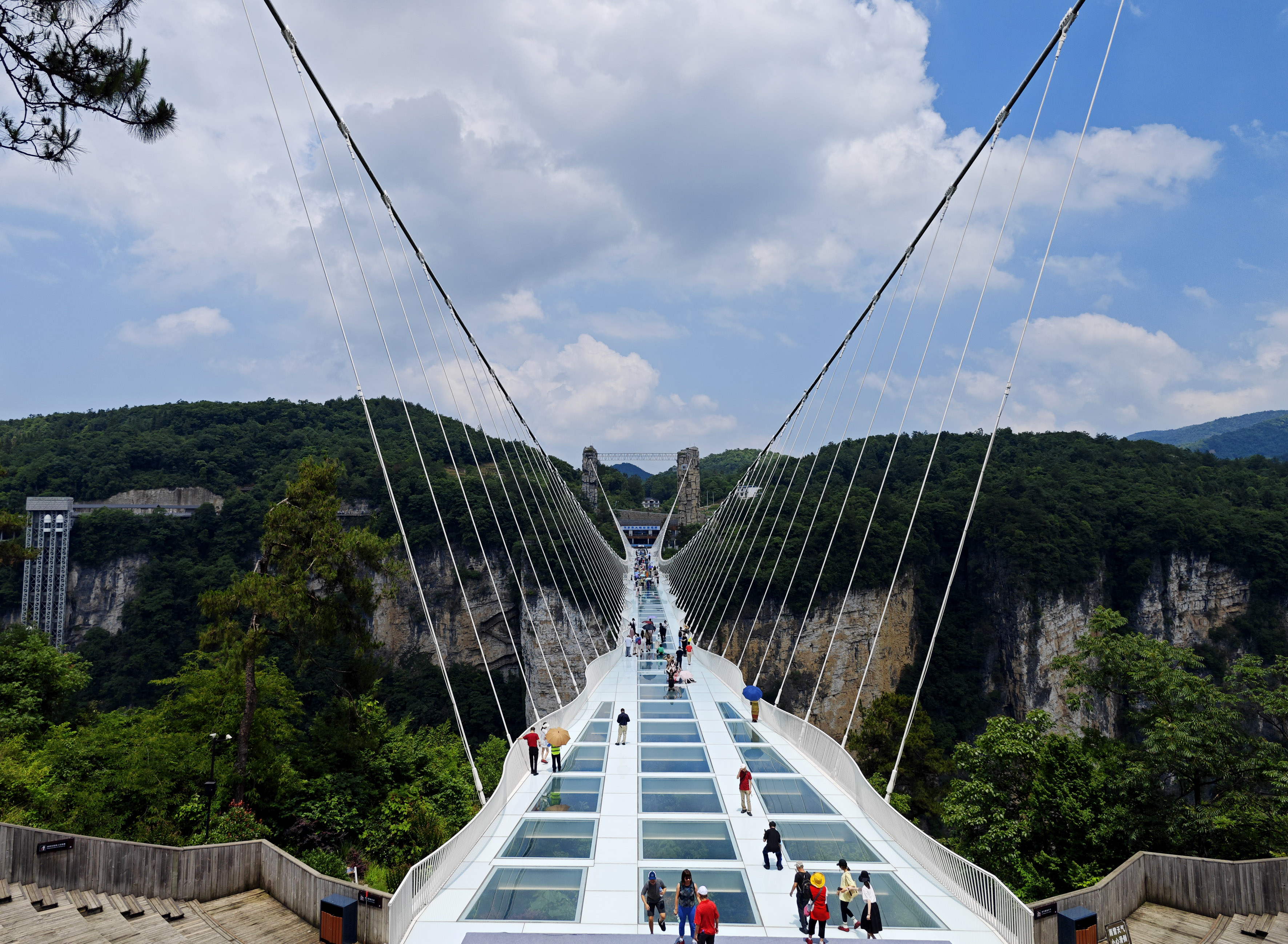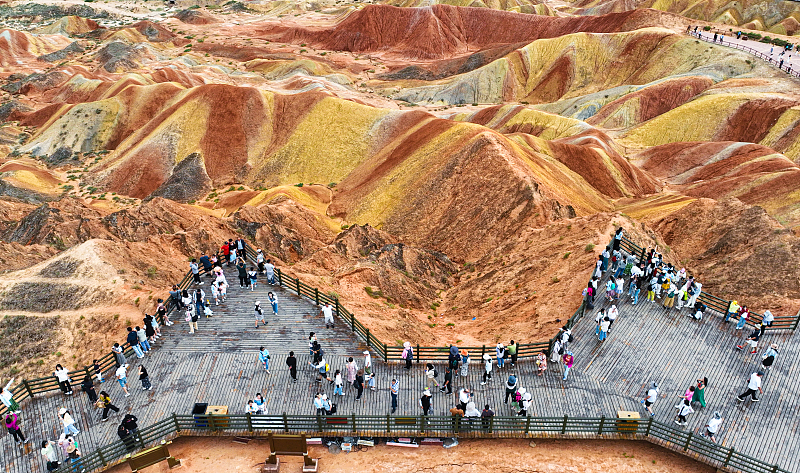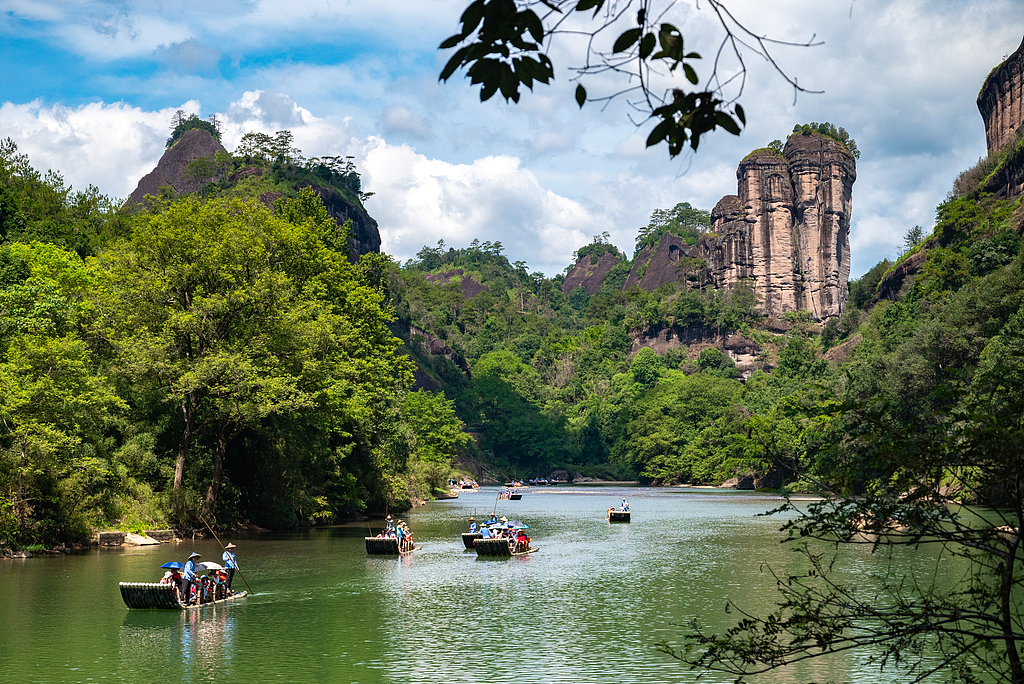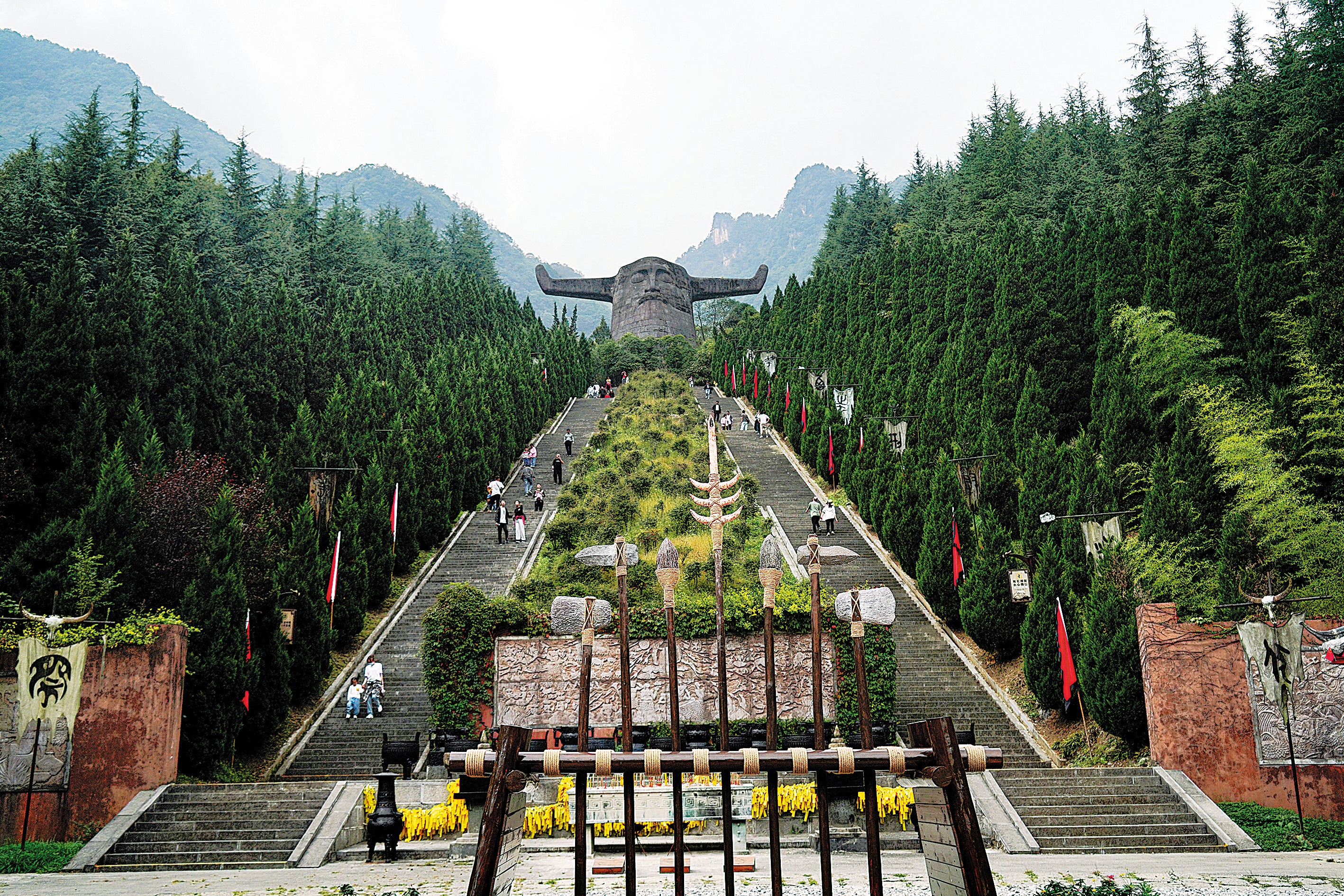China is home to some of the most breathtaking landscapes in the world, and its national parks offer travelers an unforgettable way to experience this natural beauty. From soaring mountain ranges and crystal clear lakes to ancient forests and cultural heritage sites, the best national parks in China showcase a perfect blend of nature and history. As travel trends in 2025 continue to highlight eco-tourism, adventure travel, and cultural exploration, these parks have become top destinations for both local and international visitors. Travelers searching for outdoor adventures in Asia, scenic hiking trails, or serene escapes will find China’s protected areas ranking high on global travel guides.
The top ten best national parks to visit in China this year provide something for every traveler. Zhangjiajie National Forest Park, known for its towering sandstone pillars, inspired movie landscapes that captivate millions. Jiuzhaigou Valley offers turquoise lakes, waterfalls, and snow capped peaks, making it a dream for nature photography. Mount Huangshan remains one of the most iconic spots for sunrise views above a sea of clouds. Other parks feature rare wildlife, traditional villages, and UNESCO World Heritage recognition, adding cultural depth to the journey.
Exploring the best national parks in China in 2025 is not just about sightseeing but about connecting with nature, embracing sustainable travel, and experiencing destinations that are rich in biodiversity and history. Whether you are drawn to adventure, tranquility, or cultural exploration, these parks stand out as must-visit attractions that belong on every travel bucket list this year.
Top Ten Best National Parks To Visit In China (2025)
10. Zhangjiajie National Forest Park, Hunan Province

Zhangjiajie is an otherworldly landscape of pillar like sandstone peaks that soar from subtropical forest, often shrouded in mist. Walk the Golden Whip Stream for a quiet riverside path beneath towering cliffs or climb to Tianzi Mountain for a panorama of thousands of stone pillars and distant ridgelines. The area sits inside the larger Wulingyuan Scenic and Historic Interest Area which the world recognized for its unique geology and rich biodiversity. Visitors can ride glass elevators and cableways to reach viewpoints that would otherwise demand long climbs, making dramatic sunrise and cloud sea views accessible for photographers and casual travelers alike.
Native plants and rare animal species persist in these valleys so conservation and visitor management shape how people experience the park. Spring and autumn bring the most comfortable weather and vivid foliage while winter and early morning mist produce the most cinematic photography. Practical planning matters here. Book tickets and internal transport with time buffers, aim for early starts to avoid the busiest hours and respect local rules designed to protect trails and wildlife. Zhangjiajie remains a top choice for nature tourism in China thanks to its singular rock forms and well developed viewing infrastructure.
9. Jiuzhaigou Valley Scenic Area, Sichuan Province

Jiuzhaigou is famed for a mosaic of turquoise lakes, stepped waterfalls and old growth forest that reflect every season in a new palette. Lakes such as Five Flower Lake and Five Color Pond change hue with light and water depth, producing mirror like surfaces that delight landscape photographers and casual visitors alike. Trails and boardwalks thread around many of the most memorable pools and falls so you can experience the vivid waters up close without leaving marked routes. The valley sits within a World Heritage area and hosts Tibetan and Qiang villages where local culture and traditional architecture add human depth to the natural spectacle.
Autumn places the lakes against fiery foliage making it the most sought after time for dramatic color contrast, while winter offers a quieter, frosted version of the valley. Access is typically via Chengdu with feeder flights and road transfers available, and the park manages visitor flows to preserve fragile aquatic ecosystems. Whether you come for hiking, photography or to combine nature with cultural encounters, Jiuzhaigou remains a jewel in China’s protected area network.
8. Mount Huangshan, Anhui Province

Mount Huangshan known as Yellow Mountain is a living subject for Chinese art and a pilgrimage for sunrise chasers. The mountain range is famous for its contorted pine trees clinging to granite peaks, dramatic rock formations, sea of clouds and carefully placed viewing platforms that showcase dawn and dusk light. Hikers choose well worn trails and cable cars to reach key summits and sunrise stands, and many spend a night on the mountain to catch the early morning spectacle when ridges appear to float in a white ocean.
The cultural legacy of Huangshan runs deep; artists and poets have recorded its forms for centuries and UNESCO recognized it for its scenic and cultural value. Weather can change fast so layering and flexible plans help you make the most of photographic windows. Small guesthouses and mountain inns make overnight stays possible while local authorities regulate numbers to reduce erosion and maintain natural character. Mount Huangshan rewards adventurous visitors with iconic scenery that blends geology and ancient aesthetic tradition.
7. Zhangye Danxia National Geological Park, Gansu Province

Rainbow colored rock layers carved by wind and water create the Zhangye Danxia landscape, a sequence of banded cliffs and folded ridges that look painted onto the earth. Erosion over millions of years has revealed mineral bands in vivid reds, oranges and golds that glow at sunrise and sunset when low angle light amplifies the contrasts. A network of viewpoints and short walking platforms allows visitors to see sweeping folds and layered strata without long hikes, making the park ideal for day trips and landscape photography tours.
The geological story here is compelling because it exposes sedimentary processes and tectonic uplift in a way that is visually obvious at human scale. Local roads and boardwalks connect panoramic ridges, while seasonal weather and occasional dust dictate clarity for the best photographs. Combine a visit with regional stops for a fuller sense of the Gansu plateau and its Silk Road era history. The visual drama of Zhangye Danxia keeps it high on China must see lists for geology and photography enthusiasts.
6. Wuyi Mountains National Park, Fujian Province

The Wuyi Mountains offer an elegant mix of steep tea clad slopes, river gorges and ancient cultural sites that shaped Chinese philosophy and tea culture. The Nine Bend River winds through deep, shaded gorges where bamboo framed sampan rides reveal hidden cliffs and tranquil temples. On the slopes, terraced tea gardens grow prized varieties and centuries old cliff side sites recall the region’s role in the development of neo Confucian thought. Biodiversity here is exceptional with many relict plant species and endemic animals sheltered in steep ravines, a reason the area holds UNESCO recognition. Hiking trails cross ridgelines and forested valleys while raft trips provide calm access to dramatic river scenery. The area’s protected status balances conservation and sustainable tourism so visitors can learn about both ecology and traditional tea production. For travelers interested in a combination of gentle adventure cultural depth and botanical diversity Wuyishan stands out as an immersive national park experience.
5. Three Parallel Rivers of Yunnan Protected Area

High in northwest Yunnan the steep canyons of three major rivers run parallel within a short span creating staggering vertical relief and exceptional biological richness. The region links landscapes from subtropical valleys to alpine peaks and shelters enormous plant and animal diversity across sharply contrasting ecosystems. Villages of the Naxi, Lisu and other ethnic groups live along terraces and mountain slopes preserving traditional land use and cultural heritage.
Protected corridors and scenic viewpoints make it possible to appreciate the rivers dramatic depths and rare species without extensive backcountry travel but prepare for winding roads and variable weather when moving between sites. The area’s World Heritage status reflects outstanding universal value for both natural and cultural systems, and bird watchers and botanists often travel specifically to experience its endemic species.
As an offbeat but rewarding destination the Three Parallel Rivers area appeals to travelers seeking wild mountain scenery and cultural immersion.
4. Hainan Tropical Rainforest National Park

China’s only truly tropical island environment places thick rainforest, limestone caves and coastal wetlands side by side on Hainan Island. This national park protects lowland and montane rainforest with high biodiversity and endemic plants that are rare elsewhere in the country. Mangrove fringes and coral influenced bays link marine and forest conservation so visitors can combine canopy walks cave exploration and beach time in one itinerary.The province is developing sustainable tourism products that highlight eco tours, guided wildlife observation and interpretive trails while local Hainanese culture adds culinary and historical interest.
For travelers who want tropical climate, accessible wildlife and varied ecosystems in a single region Hainan’s rainforest park is a strategic choice. Peak season aligns with dry months but shoulder periods may offer quieter access and rich birding. As China expands its national park framework Hainan plays an important role for island and tropical biodiversity conservation.
3. Giant Panda National Park, Sichuan and surrounding provinces

Giant Panda National Park connects dozens of panda reserves into a vast conservation landscape designed to expand core habitat and enable safe movement for vulnerable wildlife. This park became a keystone project for panda recovery and links mountain forests that support not only giant pandas but also other rare species such as red pandas and clouded leopards. Visitors often access panda viewing and research centers that combine education with a chance to see animals in semi natural enclosures and protected valleys.
Trails through bamboo forest and guided conservation tours reveal habitat management efforts and the science behind population recovery. Because the park spans a very large area travel planning depends on which reserve you choose as base, often with Chengdu as the main gateway. Conservation oriented trips and small scale eco tours offer the best balance of meaningful wildlife experience and low impact visitation. The Giant Panda National Park is a flagship for wildlife tourism and long term habitat protection in China.
2. Sanjiangyuan National Park, Qinghai Province

Known as China’s water tower Sanjiangyuan protects the headwaters of the Yangtze, Yellow and Mekong rivers, a landscape of high plateau lakes, wetlands and alpine grasslands that supply freshwater to vast regions downstream. This high altitude park plays an outsized role in regional hydrology and biodiversity, sheltering species such as Tibetan antelope and snow leopard, and supporting pastoral traditions that date back generations. Governance here blends scientific conservation measures with community oriented management aimed at protecting fragile wetlands and restoring degraded grasslands.
For adventurous travelers the remote scenery is spectacular with wide sky, blue lakes and sweeping plateaus that feel immense and elemental. Seasonal access varies with weather and altitude so prepare for high elevation conditions and plan logistics carefully. Visiting Sanjiangyuan offers a chance to see one of the most consequential conservation landscapes on the planet while learning why headwater protection matters for billions of people and numerous ecosystems downstream.
1. Shennongjia Nature Reserve, Hubei Province
Shennongjia crowns this top ten list because it combines deep temperate forest, outstanding biodiversity and cultural mystery in compact but dramatic terrain. Ancient trees and rich understory host rare species including the golden snub nosed monkey and numerous endemic plants, contributing to its World Heritage designation. Hiking routes reveal waterfalls, cliff faces and the famed Banbiyan rock features while lookout ridges give sweeping views over forested valleys and cloud swept peaks. Shennongjia also holds a place in Chinese folklore and natural history so interpretive trails include both ecological and cultural layers for visitors to explore.
The reserve is a strong choice for wildlife enthusiasts and photographers focused on temperate forest ecosystems and rare primates. Seasonal variation from spring bloom to autumn color makes every trip different but always rewarding. Conservation management maintains strict protections to preserve core habitat so visitors should follow all guidelines and stay on designated trails to help protect this fragile living archive.



Your advice is exactly what I needed right now.
Thanks for addressing this topic—it’s so important.
This is exactly the kind of content I’ve been searching for.